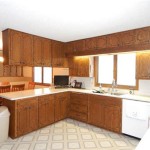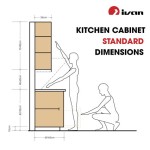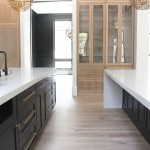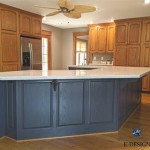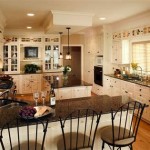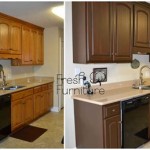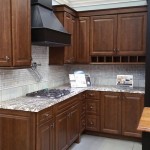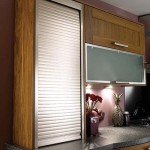Can You Paint Kitchen Cabinets Without Stripping Them?
Introduction:
Kitchen cabinets are a major focal point of any kitchen, and painting them can be a great way to update the look of your space without breaking the bank. However, traditional painting methods involve stripping the cabinets down to bare wood, which can be a time-consuming and messy process. Fortunately, there is a way to paint kitchen cabinets without stripping them, making it a much easier and more manageable project.Benefits of Painting Cabinets Without Stripping:
There are several benefits to painting kitchen cabinets without stripping them. First, it is much less time-consuming than traditional painting methods. Stripping cabinets can take hours or even days, while painting without stripping can be completed in a matter of hours. Second, it is much less messy. Stripping cabinets creates a lot of dust and debris, which can be difficult to clean up. Painting without stripping produces much less mess.Third, it is less likely to damage the cabinets. Stripping cabinets can damage the wood, especially if it is old or delicate. Painting without stripping is much less likely to cause damage.
Materials You'll Need:
To paint kitchen cabinets without stripping, you will need the following materials:- TSP or denatured alcohol
- Clean rags or sponges
- Sandpaper (120-grit and 220-grit)
- Tack cloth
- Primer
- Paint
- Paintbrush or roller
Step-by-Step Instructions:
To paint kitchen cabinets without stripping, follow these steps:- Clean the cabinets. Wipe down the cabinets with TSP or denatured alcohol to remove any dirt or grease. Allow the cabinets to dry completely.
- Sand the cabinets. Using 120-grit sandpaper, lightly sand the cabinets to remove any glossy finish. This will help the primer and paint to adhere better to the cabinets.
- Wipe down the cabinets again. Use a clean rag or sponge to wipe down the cabinets to remove any sanding dust.
- Apply primer. Apply a coat of primer to the cabinets, using a paintbrush or roller. Allow the primer to dry completely.
- Sand the primer lightly. Once the primer is dry, lightly sand it with 220-grit sandpaper to smooth out any imperfections.
- Wipe down the cabinets again. Wipe down the cabinets again to remove any sanding dust.
- Apply paint. Apply two coats of paint to the cabinets, using a paintbrush or roller. Allow each coat of paint to dry completely before applying the next coat.
Tips:
- Use a high-quality primer and paint to ensure a durable finish.
- Apply thin, even coats of primer and paint to avoid runs and drips.
- Allow each coat of primer and paint to dry completely before applying the next coat.
- If you are painting white cabinets, you may need to apply three or more coats of paint to achieve good coverage.

Can You Paint Kitchen Cabinets Without Sanding

How To Paint Cabinets Without Removing Doors House Mix

How To Paint Kitchen Cabinets Without Sanding Or Priming

How To Paint Kitchen Cabinets Without Sanding Sustain My Craft Habit

How To Paint Kitchen Cabinets Without Sanding The Budget Decorator

How To Paint Your Cabinets In A Weekend Without Sanding Them Chris Loves Julia

The Easy Way To Paint Kitchen Cabinets No Sanding Building Bluebird

Painting Over Oak Cabinets Without Sanding Or Priming Hometalk

How To Paint Fake Wood Kitchen Cabinets Simple Made Pretty 2024

The Best Way To Paint Kitchen Cabinets No Sanding Palette Muse
Related Posts

